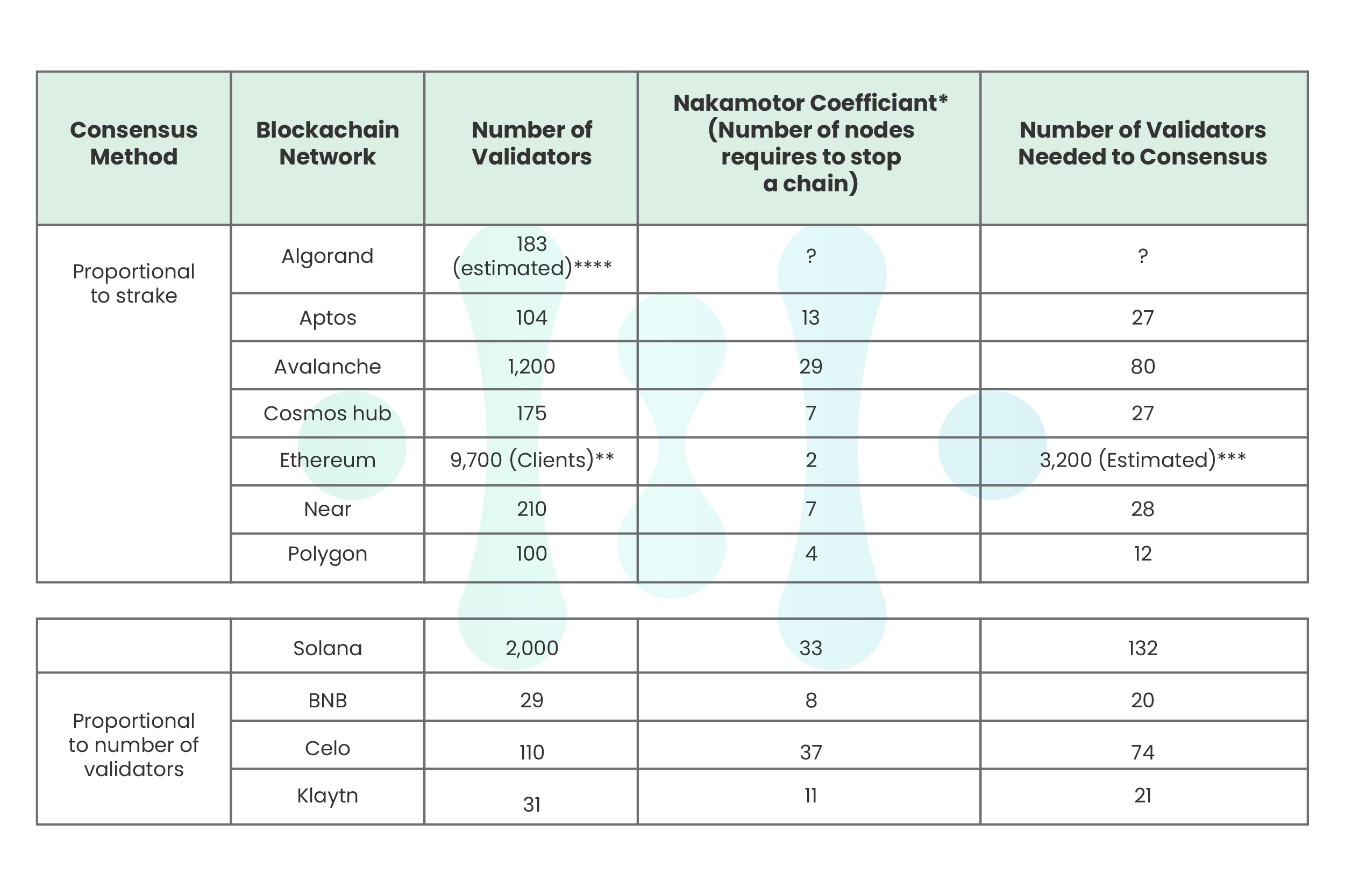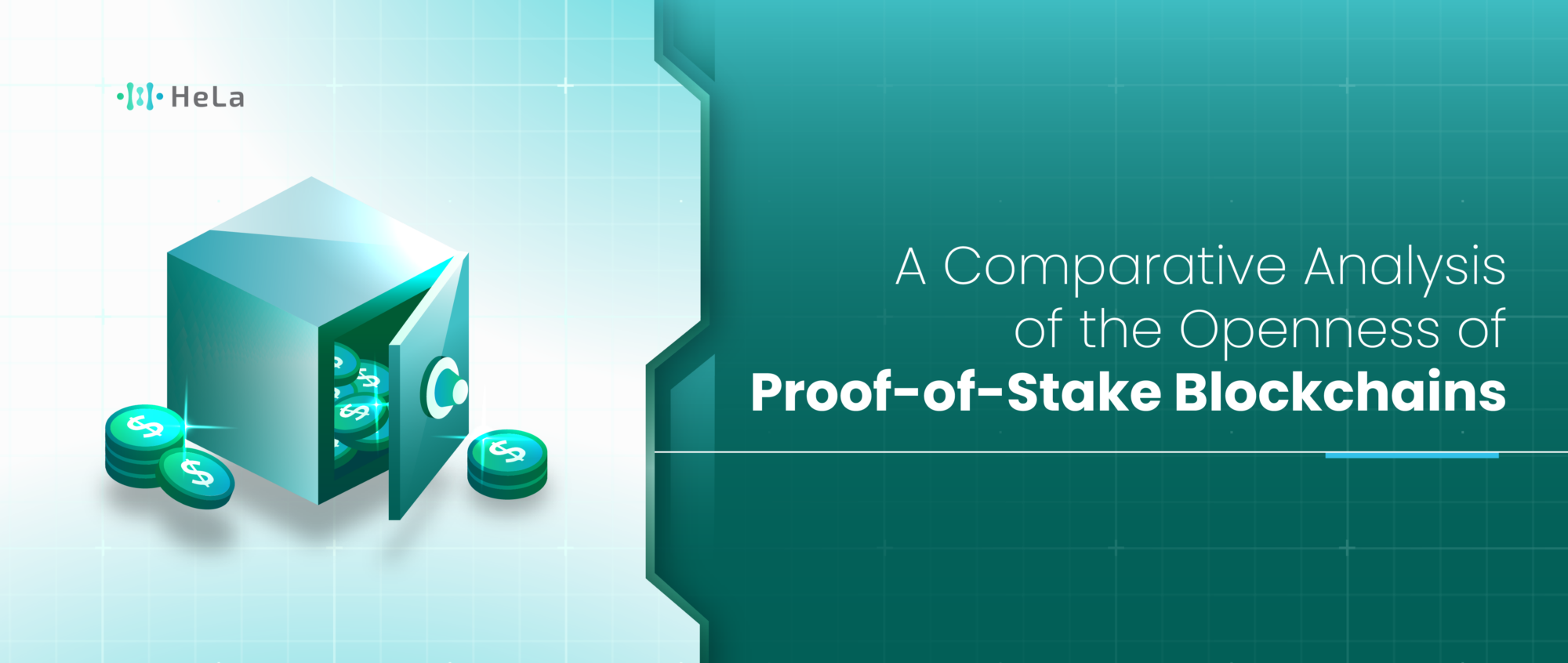Proof-of-stake (PoS) is a consensus mechanism that allows participants to validate transactions and create new blocks on a blockchain network by staking their own assets.
PoS is considered to be more energy-efficient, scalable, and secure than the traditional proof-of-work (PoW) mechanism that relies on computational power and mining.
However, PoS also poses some challenges and trade-offs, such as the degree of openness and accessibility of the network to different stakeholders. Openness refers to the extent to which anyone can join and contribute to the network, regardless of their resources, identity, or location.
Openness is an important aspect of blockchain networks, as it affects their decentralisation, security, and inclusiveness.
In this blog , it will compare and contrast the openness of eleven PoS blockchains, namely Algorand, Aptos, Avalanche, BNB Chain, Celo, Cosmos Hub, Ethereum, Near, Solana, Klaytn, and Polygon(as you see on the chat Blockchain Networks).
I will use five metrics to measure the openness of these networks: the number of validators, the capital required for participation, the capital concentration, the operating costs, and the network stability from an economic perspective. I will also discuss the strengths and weaknesses of each network, and the implications of their openness for their future development and adoption.
My main argument is that there is no one-size-fits-all solution for PoS openness, and that each network has to balance the trade-offs between openness and other factors, such as scalability, security, and performance.
The Power of Validators

One metric of openness is the number of validators, which indicates how many nodes are responsible for validating transactions and creating new blocks on the network. The number of validators reflects the degree of decentralisation and diversity of the network, as well as the potential for censorship resistance and fault tolerance.
A higher number of validators implies a higher level of openness, as more participants can have a say in the network governance and operation.
Among the eleven PoS networks, Ethereum has the highest number of validators as show on the table1, with over 200,000 nodes as of January 2024 [2]. Ethereum is transitioning from PoW to PoS, and aims to achieve a high level of decentralisation and security with its PoS mechanism, called Casper. Ethereum allows anyone to become a validator by staking 32 ether (ETH), the native cryptocurrency of the network.
Ethereum also implements a mechanism called sharding, which splits the network into multiple parallel chains, called shards, to increase its scalability and throughput. Each shard has its own set of validators, who are randomly assigned and rotated by the network.
This prevents the formation of validator cartels or coalitions that could compromise the network integrity.

On the other end of the spectrum, BNB Chain has the lowest number of validators, with only 21 nodes as of January 2024[1]. BNB Chain is a PoS network that supports the Binance Smart Chain (BSC), a blockchain platform that offers smart contract functionality and compatibility with Ethereum. BNB Chain uses a variant of PoS, called delegated PoS (DPoS), which allows users to delegate their stake to validators, who are elected by the network.
BNB Chain limits the number of validators to 21, in order to achieve faster transaction confirmation and higher performance. However, this also reduces the openness and decentralisation of the network, as the validators have more power and influence over the network decisions and outcomes. To go deeper we could also appreciate the fig1.

Fig. 1: Number of validators on different blockchain networks
PoS Blockchain Openness
In conclusion, this blog has compared and contrasted the openness of eleven PoS blockchains, using five metrics: the number of validators, the capital required for participation, the capital concentration, the operating costs, and the network stability from an economic perspective.
The blog has shown that there is a wide range of openness among the PoS networks, and that each network has its own advantages and disadvantages, depending on its design choices and trade-offs.
The blog has also argued that there is no optimal level of openness for PoS networks, and that each network has to balance the openness with other factors, such as scalability, security, and performance.
The comparative analysis of the openness of PoS blockchains has important implications for the future of blockchain technology and its applications. As PoS becomes more popular and widely adopted, the openness of the networks will affect their user experience, adoption rate, innovation potential, and social impact.
Therefore, it is essential for the network developers, users, and regulators to understand the benefits and risks of different levels of openness, and to make informed and responsible decisions regarding the participation and governance of the PoS networks.
Further research is needed to explore the best practices and standards for PoS openness, and to evaluate the impact of openness on the network performance and outcomes.
References:
[1] https://arxiv.org/pdf/2305.13259.pdf.
[2] https://klaytn.foundation/pos-openness-analysis/
[3] https://klaytn.foundation/wp-content/uploads/2023/05/A-Comparative-Analysis-of-the-Openness-of-Proof-of-Stake-Blockchains.pdf





